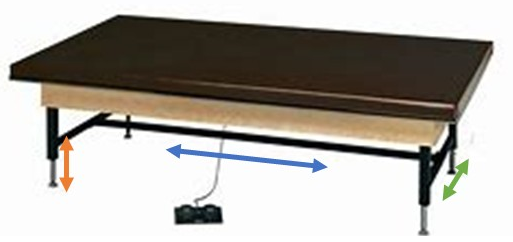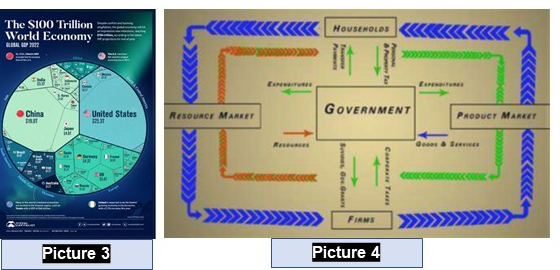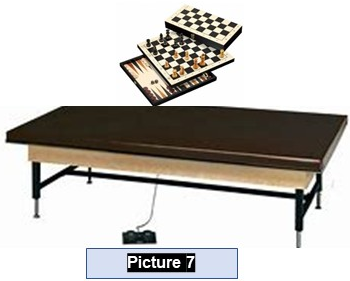
by Commodore (HN Rt) Kostas Papachristodoulou (pictured above)

The Platform-table simulates the relation among Geo-Policy/Strategy/Economy
What is frequently speculated by the internet
• Many articles introduce the relation between Geo-Policy and Geo-economy, as the following;
Geo-politics is “realism”.Geo-economics is its “economic means.” By admitting the complexity of the world in GEOPOLITICS & GEOECONOMICS, the dangers of the “fragility” that lies in economic interdependence, AMANO Tatsushi, Director General of the Strategic Research Department at JBIC, shares his “realistic” worldview:
- Many articles state the relation between Geo-policy and Geo-strategy as follows:
While geopolitics is ostensibly neutral — examining the geographic and political features of different regions, especially the impact of geography on politics — geo-strategy involves comprehensive planning, assigning means for achieving national goals or securing assets for the military or political significance.
There are many articles approaching the interactions between adversaries and the concepts of how Geo-policy and Geo-strategy functions, which factors are related respectively to each of these etc., as for example in the following:
geo-strategy and geopolitics – Αναζήτηση Google (means search in Google)
“….BUT IT IS RARE TO FIND HOW THEY ARE CONNECTED THE THREE TOGETHER AS A COMPOSED EFFORT”
The simulation of a well structure platform-table
In the beginning of this article, we can see a table with interconnected bars to support the entire structure such as the legs and the surface of the table which are mutually supported by connective bars. Years ago, when I was student in the Greece’s Naval War College, a professor with a background in the science of History lecturing on the Geo-policy stated that “Geo-policy is like a ceiling erected on two pillars”. It was difficult to understand this but I gave attention to the rest of his teaching which opened me a new horizon. For the rest of my career having in my mind this simple aforementioned question, I noticed that there isn’t a specific university diploma for Geo-politics. Thus, I realized that Geo-politics were a part in more so to speak general universities titles. Secondly, I realized that there were two basic approaching methods (that of the “sea-power’s” and that of the “land power’s”) on the same games-board (chess or backgammon) while nowadays there are about four as far as I know. Consequently, since the Geo-politics are a part of other policy sciences, we will approach it through the domain of relative forces and a connection using the simulation of the platform-table.
Whichever the case may be, we will analyze Geo-policy by using the mechanic sector of physics which the balanced forces permit a table to stand.
- First of all, this construction rests on the ground (Geo-).
- Secondly, the forces applied to the ground and vice versa are applied to the legs and the interconnection bars.
- The surface of the platform-table is assumed neutral, doesn’t have reaction forces with the ground and it is the reason of why the legs exist while the table will accommodate our activities.
As a result, the surface of the table for which any player has to take care, seeking to use it to set its gameboard on it, seems to be “neutral” but ready for a game to be started when interests appear or an adversary apparent. At the begging is used for expanding the distance of the view (seemingly neutral) but also supporting the weight of a game which could be started.
As the owner of the table seeking for broader and stronger capability, the construction combined with the system of legs (geo-strategy and geo-policy) must be so stronger so as to include current and future weights.
That is the undeniable function due to “the physics of a platform-table” which is similar of how the Geo-Policy with the two pair of legs (pillars), the Geo-strategy and Geo-economy pillars composes the Geo-policy platform. Thus, you have the platform to oversee and accommodate a game. In simple terms you know “what is the force you can project or withstand”.
In conclusion we have:
- The platform table (terrain of Geo-policy),
- the interconnection of each pair of legs
- the interconnection between the legs,
- the pair of legs
as a result, the surface of the platform-table which is neutral to the ground (Geo-) but ready to accommodate your gameboard or adversary’s. (in the terms you have assume that yours can withstand his otherwise you have to choose the path of diplomatic avoidance). A former Commander in chief of Hellenic fleet once said “avoid conflicting until you would be ready”. Basic tactic in Naval warfare.

Keep It Simple Sir(kiss) in the Geo-politics but defined
The pair of legs and the interconnections between the legs

Geo-economy is represented by the one pair of legs, let’s say the right pair of legs. The one leg is the macro-economy and the other is the micro-economy. It is well known that macro-economy doesn’t have a greater value impact than the micro-economy in every circumstance but it is related with the nature of the financial procedures due to resources. The other leg is the micro-economy which is related with the accommodation of the people and their prosperity. Of course, a balance between them it is the best achievement. In this sense, we are referred to the kind of activities, the first pursuing resources and the latter pursuing a healthy circulation of currency. In other terms a balance between the people’s prosperity and state’s financial capacity. It is not clear of course where are exactly the boundaries discriminating them in every and each case. In picture 4, which provides the typical economy process of a state or a union; the right up angle with its sides represents the sector of the micro-economy and the down left the field of the macro-economy.
The rule is: As we are seeking “raw materials resources” we ought to develop the “capability of producing products” by interconnecting them through viable transportation and governmental procedures. Under these conditions we have the Geo-economy of the Geopolitics (the one pair of the legs) which provide the one pillar of Geo-policy which is maintained the Geo-policy strong from its side.

Geo-strategy
is represented by the other pair of legs, let’s say the left pair of legs. The one leg is the comprehensive planning as well as the appropriate means and the other that of securing the
assets of military or political significance.
Who could deny that
the means and planning is the success factors
deciding the achievement of goals. Consequently, the means and planning for any campaign are needed as well as
the withdrawal back to safe and secure place for future use after a strategic campaign is paramount
. The interconnection bar between the legs of this pair is referred frequently with the
phrase “defense and security” with the capability for security in generated from a different governmental sector other than Defense domain under a unified effort of the central government.
The rule: As we are planning for the strength of our “civil-military strength”, we align means and plans for achieving our Geo-Strategic pursuit in the frame our Policy aim on opportunities, while we maintain our Security and Safety capabilities supported by the Geo-economy.
The interconnections of each pair of legs
The bar connecting the two pairs of legs (resources and financial environment as well as Strategic force and preservation of the force) is the “government’s” administration tools for a combined handling of internal or external case in some cases.
- It is the domain of a “government” containing policy-making and decision making on the level of the state.
- It is like an inner-connector aligning several groups of efforts.
- Geo-strategy efforts and the Geo-economy are maintained equally aligned and strong providing decisive facilities for the power to be maintained.
The answer on the question what is more important is like the answer on question, “chicken brings the egg or egg provide the chicken?”. It is needed the capability of mitigating risks and exploiting opportunities in an ever-changing environment for the bar maintained strong.
The platform table (the placement of the geo-policy board) – picture below

“The legs provide the surface of the table the capacity to stay on its position while the surface for not getting on the ground produces the necessity for the legs to exist and their connections strong enough and balanced not to be broken due to the weight of the “chess” or the “backgammon” board. The surface of the table is the terrain of Geo-policy, the board of “chess” or “backgammon” is the frame of the game while the pairs of legs are the Geo-strategy and Geo-economy.”
As the Geo-policy constructs “the Strategy of battle” or forms “the race for Strategy and luck”, in the frame it being “seemingly neutral”, it examines and tests the terrain’s capabilities for “mitigating risks and searching for opportunities”.
The process of “predicting the risks and searching for opportunities” is an approach which is pursued by many processes from the ISO certifications to Operational and Strategic planning, Business Plan Continuity and Impact Analysis”.
New means, tools and views appear due to both the evolvement of the surface-table as well as the technological science in our era for a viable Geo-Policy to be applied aligned to a successful Geo-Strategic planning simultaneously with a health Geo-economy but the notion of the game remains the same.
The words of Policy, Strategy and Economy without adjective or a defining substantive, seem undefined. Thus, when the Policy, Strategy, Economy had applied in accordance with Geographical sense and is projected Geographically on land, sea and air creates the meaning for Geo-policy/strategy/economy is figured out.
The Geo-policy map is going to be liquefied with not only more than two Geo-policy theories but also with more than the two players of “Cold War”.
“”” Either the game being, a play of “chess” or backgammon” that other factors decide of what is the kind of game, the platform-table is defined by the aforementioned in the previous paragraphs as the rulers after administering their states, pursue the domination on “living space” or the influence on specific international zones.”””





